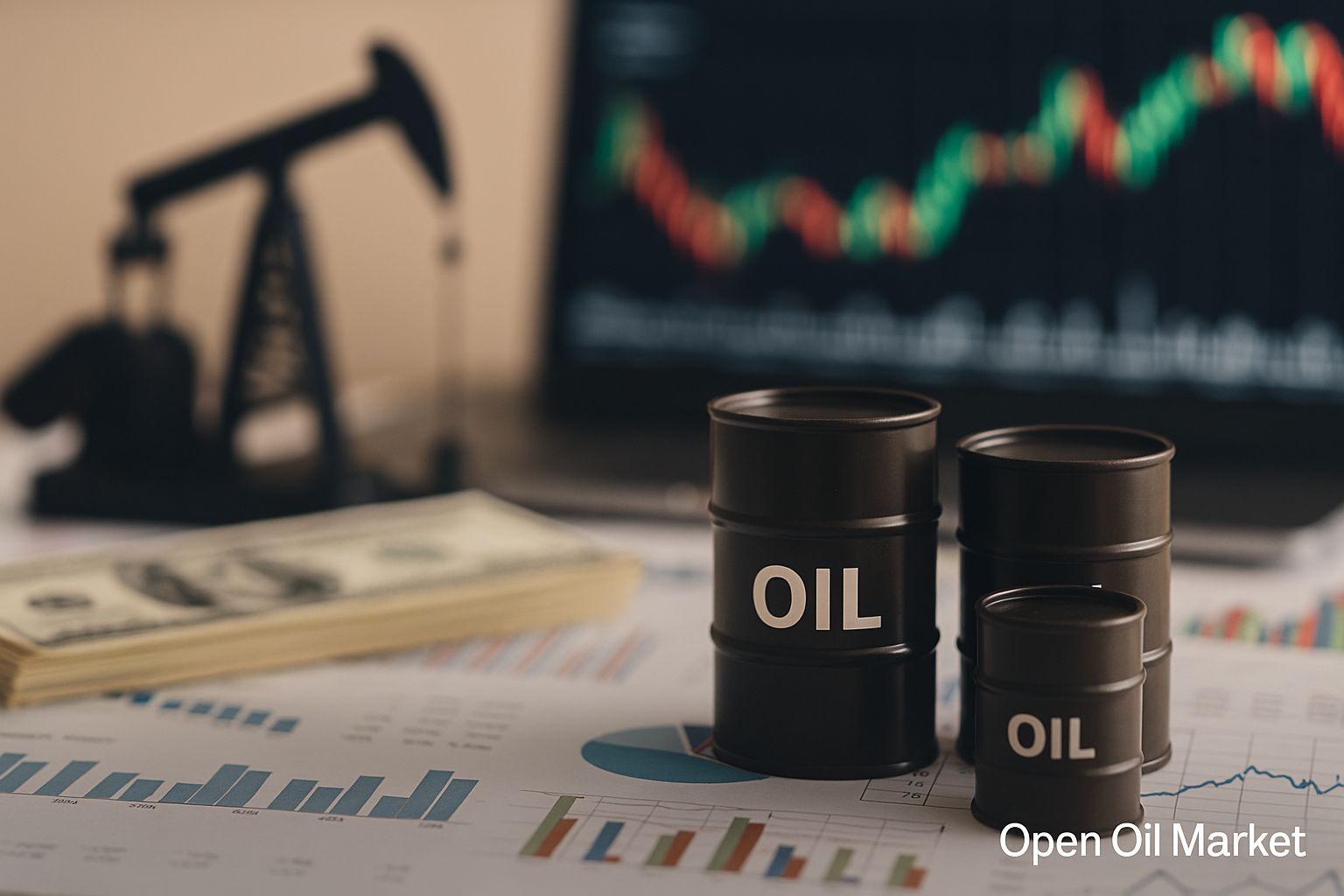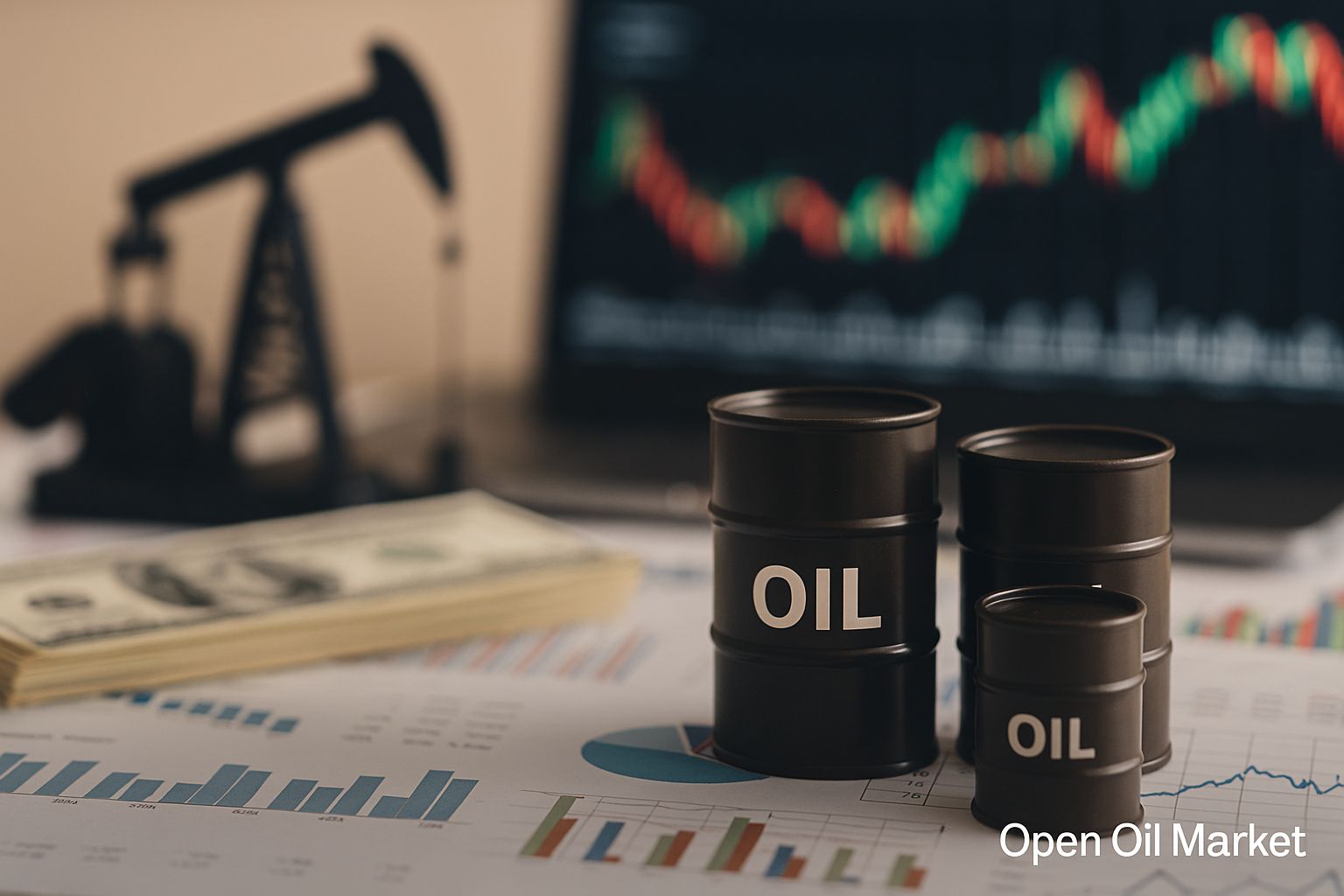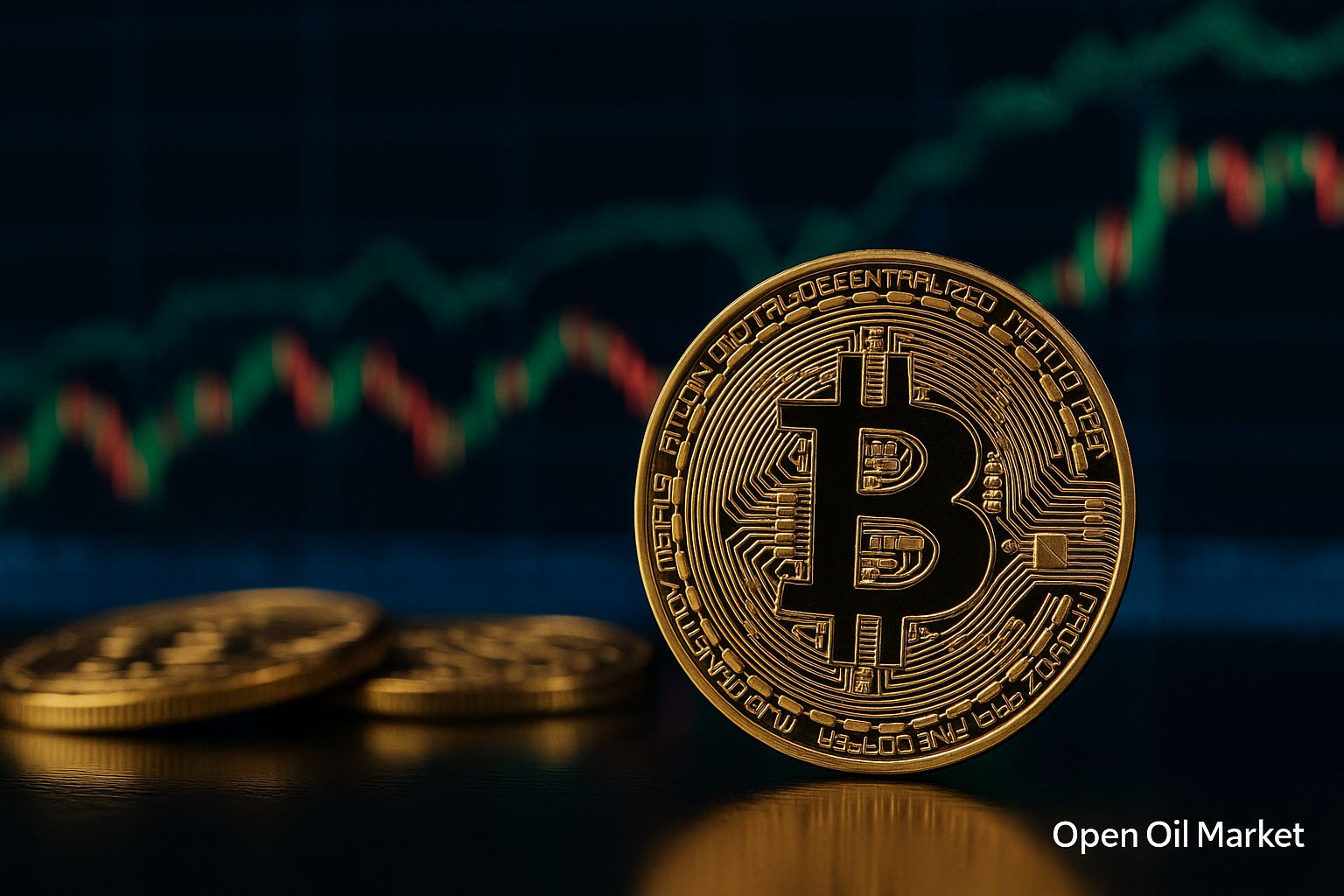
Current News in the Fuel and Energy Sector as of August 16, 2025: Outcomes of the Alaska Summit, Oil and Gas Forecasts, Coal Market Situation, Renewable Energy Growth, and Fuel Price Stabilization Measures in Russia. Analysis for Investors and Energy Sector Participants.
The latest developments in the fuel and energy sector as of August 16, 2025, draw significant attention from investors and market participants. The long-awaited summit between Russia and the U.S. in Alaska yielded mixed results: while there was no breakthrough, the continuation of dialogue instills cautious hope for a potential easing of sanctions. The global oil market remains under pressure from increasing supply and slowing demand—Brent crude prices hover around the mid-$60 per barrel, reflecting a fragile balance of factors. The European gas market shows relative resilience, with underground gas storage in the EU already over 80% full, providing a safety buffer going into winter and keeping prices at moderate levels. Meanwhile, the global energy transition is gaining momentum—with new renewable energy generation records being set in various regions—though countries have not yet fully abandoned traditional resources for the reliability of their energy systems. In Russia, fresh measures are being implemented to stabilize the fuel market following a recent price surge. Below is a detailed overview of key news and trends in the oil, gas, electricity, and commodity sectors as of this date.
Oil Market: Supply Pressure and Modest Demand
Global oil prices remain under moderate pressure. The North Sea Brent is trading at around $65–67 per barrel, while American WTI hovers around $62–64. Current prices are approximately 10–15% lower than last year’s levels, reflecting a gradual market correction after the peak values of the energy crisis of 2022–2023. Several factors continue to influence price dynamics:
- OPEC+ Production Growth. The oil alliance is methodically increasing supply to the market. In August 2025, the combined production quota of key participants in the deal was raised by approximately 548,000 barrels per day, with a similar increase expected in September. This continues a trend from previous months—OPEC+ has eased restrictions monthly from April to July, leading to an increase in global commercial oil and product reserves.
- Slowing Demand. Growth rates of global oil consumption are declining. The International Energy Agency (IEA) has revised its demand growth forecast for 2025 to about 0.7 million barrels per day (down from over 2.5 million in 2023). Even OPEC's current estimates are more modest—around +1.3 million barrels per day for 2025. Contributing factors include a weak economy and high prices from previous years, which encourage energy conservation. Additionally, slowing industrial growth in China limits the appetite of the second-largest oil consumer in the world.
- Geopolitical Uncertainty. The market is factoring in contradictory risks following the meeting between Russian and U.S. leaders. On one hand, the lack of significant progress means sustained sanctions pressure, which curbs traders' activity. On the other hand, the mere existence of ongoing negotiations somewhat reduces the geopolitical risk premium. As a result, oil prices are fluctuating within a narrow range, lacking incentives for either a new rally or a collapse.
The combined influence of these factors creates a supply surplus that keeps the oil market in a state close to overproduction. Exchange prices are consistently holding below last year’s highs. Several analysts suggest that if trends continue, the average Brent price could drop to around $50 per barrel by 2026. For now, traders are taking a wait-and-see approach, monitoring both fundamental indicators (stocks, production) and political signals following the U.S.-Russia summit.
Gas Market: Full European Storage and Stable Prices
The focus in the gas market remains on Europe. EU countries are rapidly filling their natural gas storage facilities in preparation for the autumn-winter period. According to recent data, the aggregate fill level of European gas storage has exceeded 80% of total capacity—significantly higher than average levels for mid-August and nearing the target level of around 90% set for early November. Many Western European countries already have reserves comparable to the previous year's volume as the heating season approaches, strengthening confidence in the region's energy security.
High storage levels and a stable influx of imported gas maintain a relatively calm pricing environment. Futures for gas at the Dutch TTF hub are trading around €32–34/MWh (approximately $380–400 per thousand cubic meters), which is significantly lower than the peak prices during the 2022 crisis. Currently, supply and demand are close to balance: modest summer consumption allows for inventory accumulation without substantial price hikes. European importers continue actively sourcing liquefied natural gas (LNG) from external markets—LNG receiving terminals operate at high capacity, taking in tankers from the U.S., Qatar, Australia, Africa, and other regions. This compensates for the sharp decline in pipeline supplies from Russia. Since January 2025, the transit of Russian gas through Ukraine has been completely halted following the expiration of the contract with Gazprom, and the Polish-Belarusian route (the Yamal-Europe pipeline) is also out of operation due to sanctions. Consequently, the only channel for Russian pipeline gas supplies to the EU remains the Turkish Stream through the Balkans, supplying about 50 million cubic meters per day—a small fraction of former volumes. Europe has effectively filled the gap with record LNG imports, diversifying its sources.
With current gas injection rates, European storages have a good chance of reaching the 90% fill level well before November, providing a significant safety margin for the winter. Experts, however, warn that risks are not entirely eliminated: an abnormally cold winter could sharply increase fuel consumption, and competition with Asia for new LNG cargos may intensify if economic growth in Asian countries accelerates. Nevertheless, the balance in Europe’s gas market currently appears stable, and prices remain relatively moderate. This is a favorable situation for European industry and energy ahead of the heating season.
International Politics: Summit Outcomes and Sanction Prospects
On August 15, a meeting between the presidents of Russia and the U.S. took place in Anchorage, Alaska—an event the global community awaited with great anticipation. Negotiations between Vladimir Putin and Donald Trump lasted several hours and were primarily focused on finding ways to resolve the conflict in Ukraine. As experts had predicted, the summit did not conclude with any specific agreements in the oil and gas sector, as energy topics were not the main agenda. However, both sides described the renewal of direct dialogue itself as a positive signal. The meeting resulted in agreements to continue consultations at the expert level and to maintain communication channels between the governments.
Comment: “The meeting in Alaska is unlikely to conclude with agreements on specific projects in the oil and gas industry; after all, the main theme of the negotiations is not 'oil and gas.' However, the meeting may set new frameworks for bilateral cooperation—for instance, lifting the ban on imports of energy resources from Russia and allowing American companies to return to the Russian market,” noted Sergey Tereshkin (RIA Novosti).
According to the expert, the return of U.S. oil and gas companies is particularly important for the development of complex projects in Russia—Arctic fields and offshore drilling, where domestic industries need Western technologies. For now, no changes have occurred regarding the sanctions regime: existing restrictions on Russian energy resources from Washington remain in place. Moreover, the American administration had previously indicated a willingness to pursue new restrictions if there is no progress in the political resolution of the crisis. In particular, the possibility of imposing 100% duties on all exports to China has been openly discussed in the U.S. if Beijing does not reduce its purchases of Russian oil. In this context, the absence of a breakthrough at the summit suggests the persistence of pressure. Nevertheless, the extension of the negotiation process provides a chance that the most stringent measures (new tariffs, secondary sanctions) have been postponed for now. In the coming weeks, market attention will be focused on further developments in the dialogue: positive shifts may improve investor sentiment and ease the sanctions rhetoric, while a failure in contacts risks a new escalation of trade restrictions. Thus, the results of the meeting in Alaska bear long-term implications for energy cooperation and sanctions policy.
India and China: Resource Imports and Increasing Domestic Production
The largest economies in Asia continue to balance between external energy resource supplies and the development of domestic production. **India**, facing pressure from western sanctions, has clearly articulated its position: a sharp reduction in imports of Russian oil and gas is unacceptable due to the critical role of these supplies in the country’s energy security. New Delhi has secured more favorable terms: Russian companies were compelled to offer an additional discount on Urals oil (estimated at about $5 off Brent prices) to maintain the Indian market. As a result, India continues to actively purchase Russian oil, benefiting from price concessions, and is increasing imports of petroleum products from Russia to meet its growing demand. At the same time, the Indian government is taking steps to reduce long-term dependence on imports. Prime Minister Narendra Modi announced the launch of a national program for the exploration of deepwater oil and gas fields on Independence Day (August 15). Under this initiative, the state company ONGC has already begun drilling wells at record depths of up to 5 km in the Andaman Sea. Preliminary results from geological exploration are deemed promising. This “deepwater mission” aims to stimulate the discovery of new hydrocarbon reserves and bring India closer to its goal of energy independence.
**China**, in turn, is actively increasing its energy imports while also boosting domestic production. Chinese importers remain the largest buyers of Russian oil and gas: Beijing has not joined western restrictions and has seized the opportunity to increase imports at favorable prices. According to Chinese customs statistics, in 2024 the country imported approximately 212.8 million tons of oil and 246.4 billion cubic meters of natural gas—these volumes increased by 1.8% and 6.2%, respectively, compared to the previous year. In 2025, imports continue to grow, albeit at a more moderate pace, reflecting last year’s high base. Simultaneously, China is stimulating its own oil and gas production: from January to July 2025, national companies extracted 126.6 million tons of oil (+1.3% year-on-year) and 152.5 billion cubic meters of gas (+6% year-on-year). The increase in domestic production helps partially offset the increased demand but does not eliminate the need for imports. Chinese authorities continue to invest in the development of fields and technological projects to enhance well productivity. Nonetheless, given the scale of the economy, China’s dependence on energy imports remains significant: analysts estimate that in the coming years, the country will import no less than 70% of the oil it consumes and about 40% of its gas needs. Thus, India and China—two of the largest Asian consumers—will continue to play a key role in global commodity markets, combining strategies for securing supply from abroad with the development of their own resource base.
Energy Transition: Renewable Energy Records and Support for Traditional Generation
The global shift towards clean energy is gaining momentum. Many countries are reporting new records in electricity generation from renewable sources (RES). **In Europe**, as of the end of 2024, the total generation from solar and wind power plants finally surpassed electricity production from coal and gas-fired stations. This trend has continued into 2025: with the introduction of new capacities, the share of “green” electricity in the EU is still growing, while the share of coal in the energy balance is decreasing after a temporary spike during the 2022–2023 crisis. **In the U.S.**, renewable energy has also reached historic levels—over 30% of total generation at the start of 2025 came from RES, and the combined output of wind and solar has surpassed that of the coal sector for the first time. China, a leader in installed renewable energy capacity, continues to introduce dozens of gigawatts of new solar panels and wind turbines yearly, breaking its own generation records. Globally, companies and investors are directing substantial funds toward the development of clean energy: according to the IEA, total investments in the global energy sector in 2025 will exceed $3 trillion, over half of which will be allocated to RES projects, grid modernization, and energy storage systems.
Nevertheless, energy systems continue to rely on traditional generation to ensure stability. The growth in solar and wind energy necessitates balancing demand during periods when the sun does not shine or the wind dies down. To cover peak demands and reserve capacity, gas and even coal-fired plants are employed in certain cases. For instance, in some regions of Europe last winter, coal plant output had to be briefly increased during windless weather, despite the environmental costs. Many government investments are now aimed at developing energy storage systems (industrial batteries, pumped-storage hydropower plants) and smart grids capable of flexibly redistributing power. These measures are designed to enhance the reliability of energy supply as the share of RES increases. Experts predict that by 2026–2027, renewable sources could become the leading generators of electricity globally, finally surpassing coal. However, achieving this goal over the next few years necessitates continued support for traditional power plants as a safety net against disruptions. Thus, the global energy transition is reaching new heights while requiring a careful balance between new “green” technologies and classic energy resources.
Coal Sector: High Demand in Asia Amid Stable Prices
Despite the accelerated development of RES, the global coal market maintains significant volumes and remains a vital part of the energy balance. Demand for coal remains especially high in the Asia-Pacific region, where economic growth and power generation needs sustain intense coal consumption. **China**, the world’s largest consumer and producer of coal, is burning fuel at levels close to record highs in 2025. Chinese coal mines are extracting over 4 billion tons of coal per year, meeting a large share of domestic needs, but this is barely enough to satisfy record demand during peak load periods (such as hot summer months with maximum air-conditioner usage). **India**, with substantial coal reserves, is likewise increasing its coal utilization: over 70% of electricity in the country continues to be generated from coal-fired plants, and absolute coal consumption is rising alongside its economy. Other developing countries in Asia (Indonesia, Vietnam, Bangladesh, etc.) are implementing projects for new coal-fired power plants to meet the growing energy consumption of their populations and industries.
Global coal production and trade have adapted to the sustained high demand. Major exporters—such as Indonesia, Australia, Russia, and South Africa—have increased production and export supplies of thermal coal in recent years. This has allowed coal prices to remain relatively stable. Following price spikes in 2022, thermal coal quotations have returned to more normal levels and have fluctuated within a narrow range in recent months. The balance of supply and demand appears to be harmonious: consumers reliably obtain fuel, while producers maintain stable sales at profitable prices. Although several countries have announced plans to reduce coal usage in the future for climate goals, in the short term, coal remains an indispensable resource for providing electricity to billions of people. Experts agree that within the next 5–10 years, coal generation, especially in Asia, will continue to play a significant role, despite global efforts for decarbonization. Thus, the coal sector is currently experiencing a period of relative equilibrium: demand remains consistently high, prices are moderate, and the industry continues to be one of the pillars of global energy.
Russian Oil Product Market: Aiming for Price Stabilization
In the domestic fuel segment of Russia, emergency measures are being implemented to normalize the pricing situation. In the first half of August, wholesale exchange prices for automotive gasoline in the country reached new historic highs, exceeding records of 2023. Amid high summer demand (season of active transportation and harvesting) and limited fuel supply, the government has been compelled to intensify market regulation. On August 14, a meeting of the task force to monitor the situation in the fuel and energy complex was held under the chairmanship of Deputy Prime Minister Alexander Novak, resulting in the announcement of a comprehensive package of measures to curb pricing agitation. In particular, **the total ban on the export of gasoline and diesel fuel from Russia, initially imposed for August, has been extended until the end of September** and is now applicable to all producers (including major oil companies). It is anticipated that from October, export restrictions may be partially eased: if the market balance improves by then, large refineries could be allowed to resume exports, while independent oil depots, traders, and small plants may likely remain under embargo.
One of the reasons for the fuel supply shortage has been unplanned shutdowns at several refineries. Infrastructure incidents—heightened drone attacks and accidents—have led to damage at major refineries, reducing gasoline output. Experts estimate that repairs on the affected facilities could take several weeks to several months, limiting the prospects for a rapid increase in fuel production. In these circumstances, authorities are tightening oversight of resource distribution within the country. Producing companies have been instructed to maximize domestic market supply and to avoid practices of mutual procurement on the exchange, which had previously driven up prices. (Recall that during the height of the crisis in 2023, the government prohibited address-related fuel transactions between vertically integrated oil companies in order to prevent market speculation.) Currently, the Ministry of Energy, the Federal Antimonopoly Service, and the St. Petersburg International Commodity and Raw Materials Exchange are working on long-term measures to strengthen direct contracts between refineries and final fuel suppliers, bypassing the exchanges to eliminate middlemen from the supply chain.
The combination of adopted measures aims at gradually stabilizing prices and preventing fuel shortages at gas stations. The extension of the export ban is expected to increase gasoline supply in the domestic market by at least 200–300 thousand tons per month, which were previously intended for export. Simultaneously, budget subsidies and reverse excise taxes continue to compensate oil producers for lost revenues, encouraging them to retain a greater volume of production within the country. The government assures that it will act preventively going forward: if necessary, restrictions on oil product exports could be extended, and additional resources could be swiftly directed from reserves to regions. So far, the fuel crisis is being contained: despite record exchange prices, retail prices at gas stations are rising much more slowly (within inflation, about 5% since the beginning of the year). It is crucial for the authorities to avoid a repeat of last year’s scenario, where sudden spikes in gasoline prices in certain months severely impacted consumers and farmers. Currently, gas stations are sufficiently supplied with fuel, and it is expected that the implemented measures will help gradually cool exchange quotations. Oversight of the situation continues at the highest level—government and relevant agencies are prepared to introduce new mechanisms as needed to ensure stable fuel supplies in the domestic market and to keep consumer prices within acceptable bounds.




